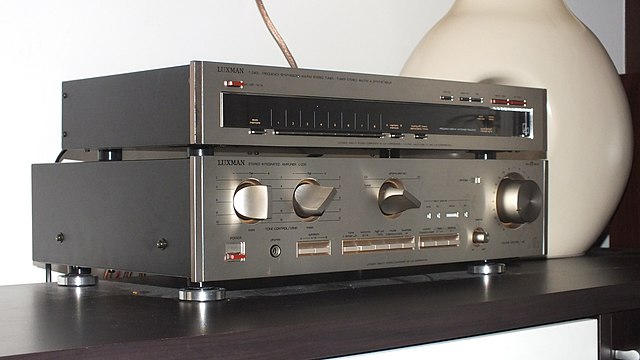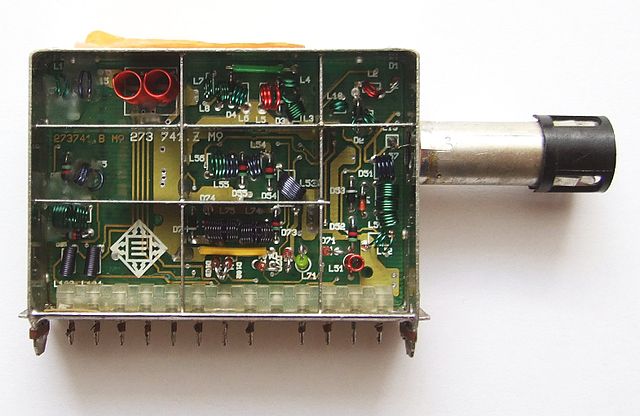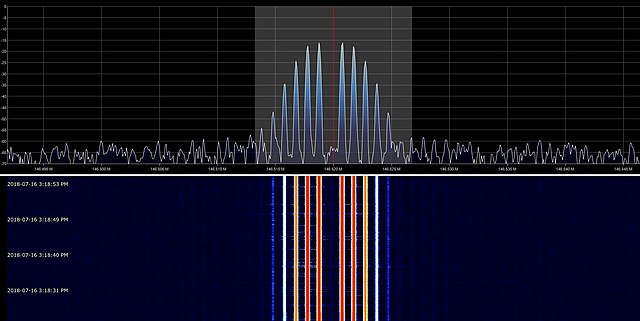A tuner is a subsystem that receives radio frequency (RF) transmissions, such as FM broadcasting, and converts the selected carrier frequency and its associated bandwidth into a fixed frequency that is suitable for further processing, usually because a lower frequency is used on the output. Broadcast FM/AM transmissions usually feed this intermediate frequency (IF) directly into a demodulator that converts the radio signal into audio-frequency signals that can be fed into an amplifier to drive a loudspeaker.
Luxman T-240L stereo FM tuner (top) and L-235 amplifier (bottom)
Revox B760 tuner
A TV Tuner plugged into Sega Game Gear
Opened VHF/UHF tuner of a television set. The antenna connector is on the right.
Frequency modulation (FM) is the encoding of information in a carrier wave by varying the instantaneous frequency of the wave. The technology is used in telecommunications, radio broadcasting, signal processing, and computing.
FM has better noise (RFI) rejection than AM, as shown in this dramatic New York publicity demonstration by General Electric in 1940. The radio has both AM and FM receivers. With a million-volt electric arc as a source of interference behind it, the AM receiver produced only a roar of static, while the FM receiver clearly reproduced a music program from Armstrong's experimental FM transmitter W2XMN in New Jersey.
Frequency spectrum and waterfall plot of a 146.52 MHz carrier, frequency modulated by a 1,000 Hz sinusoid. The modulation index has been adjusted to around 2.4, so the carrier frequency has small amplitude. Several strong sidebands are apparent; in principle an infinite number are produced in FM but the higher-order sidebands are of negligible magnitude.
An American FM radio transmitter in Buffalo, NY at WEDG







